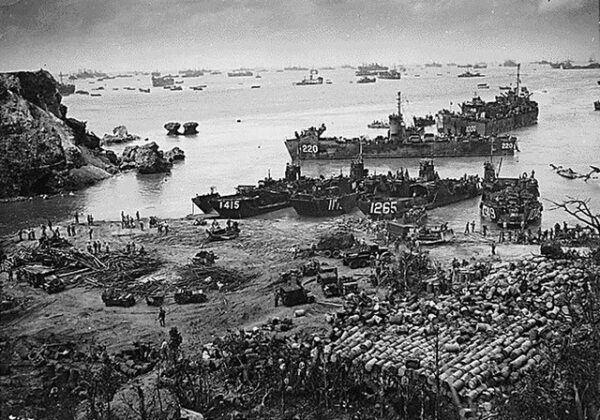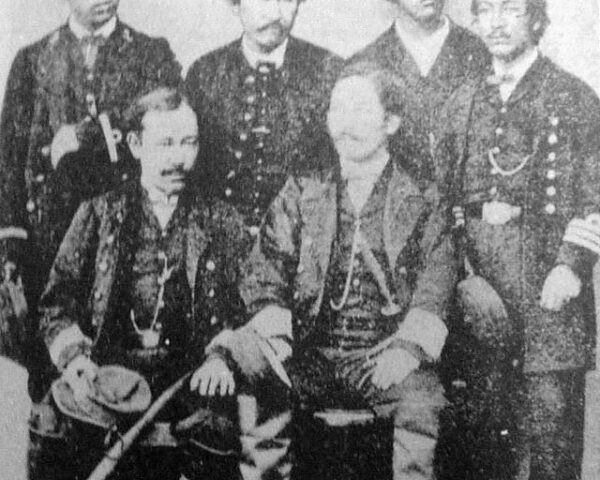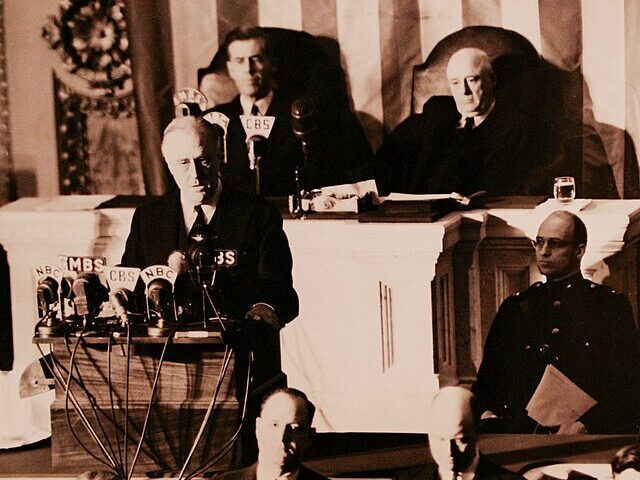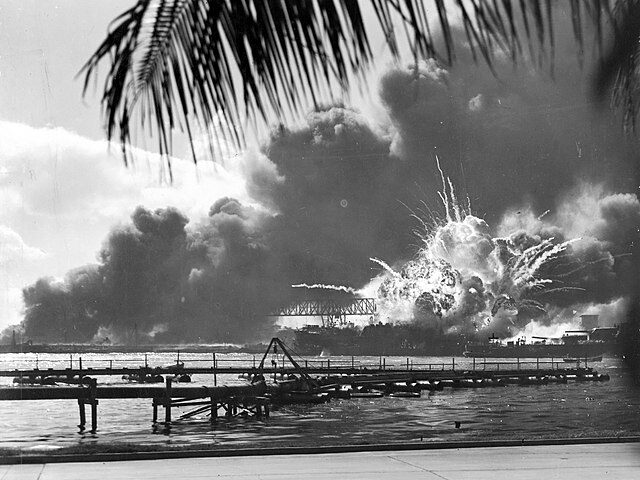The Pacific Theater in World War II took a major turn on June 21, 1945, when Allied forces defeated Japanese troops on the Pacific island of Okinawa, concluding one of the longest and bloodiest struggles of the conflict. Having already seized the other Ryukyu Islands, the United States victory allowed them to launch an onslaught against the Japanese mainland and made winning the fight against Japan one step closer.
“During its offensive in the Pacific, Japan had captured many American and Filipino prisoners, who were enduring forced marches and cruelty in prisoner of war camps. Reports of these atrocities fueled American resolve to defeat Japan, writes the Library of Congress. “The tide turned with the Battle of Midway in June 1942, at the northern tip of the Hawaiian islands, where the United States began its counteroffensive by air and sea, successfully crippling the Japanese fleet.
The U.S. strategy for conquering Japan was to capture a succession of weaker Japanese outposts, “island-hopping” toward the Japanese mainland. Slowly, in many bloody battles in the Pacific jungle, at Guadalcanal, the Solomon Islands, the Philippines, and Iwo Jima, the U.S. forces wrested Pacific territory from the Japanese, island by island.
Okinawa was the last critical outpost the United States needed to reclaim before launching an attack on the Japanese home islands. As in the progressive invasion of the other Pacific Islands, the U.S. began the onslaught with a series of air attacks on Okinawa and islands nearby, from October 1944 to March 1945.
From this time until the end of the war, the Japanese responded with an intense and desperate effort, increasing the kamikaze attacks on American ships and other targets and introducing to these suicide missions a new weapon, the baka, a piloted missile. In these guided missiles, the pilot reached more than 600 miles per hour in his final dive, and crashed into his target with more than a ton of explosives built into the nose of the aircraft.”
The battle began with a massive amphibious assault on the island of Okinawa, with nearly 60,000 U.S. soldiers landing on the beaches with 77,000 Japanese troops waited for them deeper in the jungle, ready to defend the island. The battle was fought over a period of several months, with both sides launching major offensives against each other.
Under the command of Lieutenant General Mitsuru Ushijima, who withdrew his soldiers to the southern section of the island to use the wilderness and system of caves found on the island as part of their defense, the Japanese lasted for around three months.
Eventually, the heavy resistance put up by the Japanese began to collapse, and the American forces prevailed. The cost, however, was staggering. Roughly 12,000 Americans died in the battle.
For the Japanese, it was even worse. Nearly 110,000 soldiers and civilians perished during the onslaught. To avoid the dishonor of enemy capture, General Ushijima committed ritual suicide as American forces approached with their victory assured.
On June 21, 1945, Americans breathed a sigh of relief at the end of most of the fighting on the island. The next day the Stars and Stripes flew over Okinawa. The United States could now reach the Japanese mainland for one final push, but they knew it would be costly.
The Battle of Okinawa was a turning point in the war, and it played a major role in the decision to drop the atomic bomb on Japan. The heavy casualties suffered by both sides demonstrated the high price of continued fighting.






